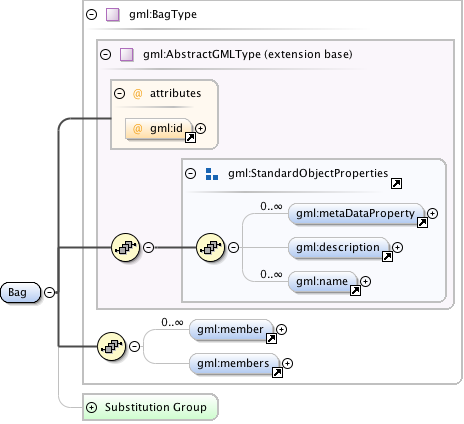| Namespace | http://www.opengis.net/gml | ||||||||||||
|
Annotations
|
Generic GML element to contain a heterogeneous collection of GML _Objects
|
||||||||||||
|
Diagram
|
 |
||||||||||||
| Type | gml:BagType | ||||||||||||
| Type hierarchy | |||||||||||||
|
Properties
|
|
||||||||||||
| Model | gml:metaDataProperty* , gml:description{0,1} , gml:name* , gml:member* , gml:members{0,1} | ||||||||||||
| Children | gml:description, gml:member, gml:members, gml:metaDataProperty, gml:name | ||||||||||||
|
Instance
|
|
||||||||||||
|
Attributes
|
|
||||||||||||
|
Source
|
|
||||||||||||
| Schema location | http://schemas.opengis.net/gml/3.1.1/base/gmlBase.xsd |